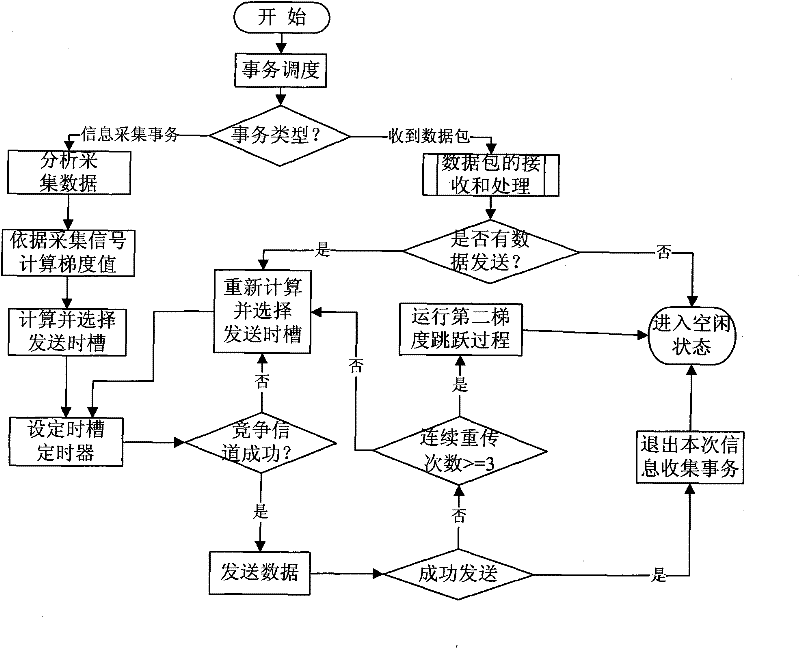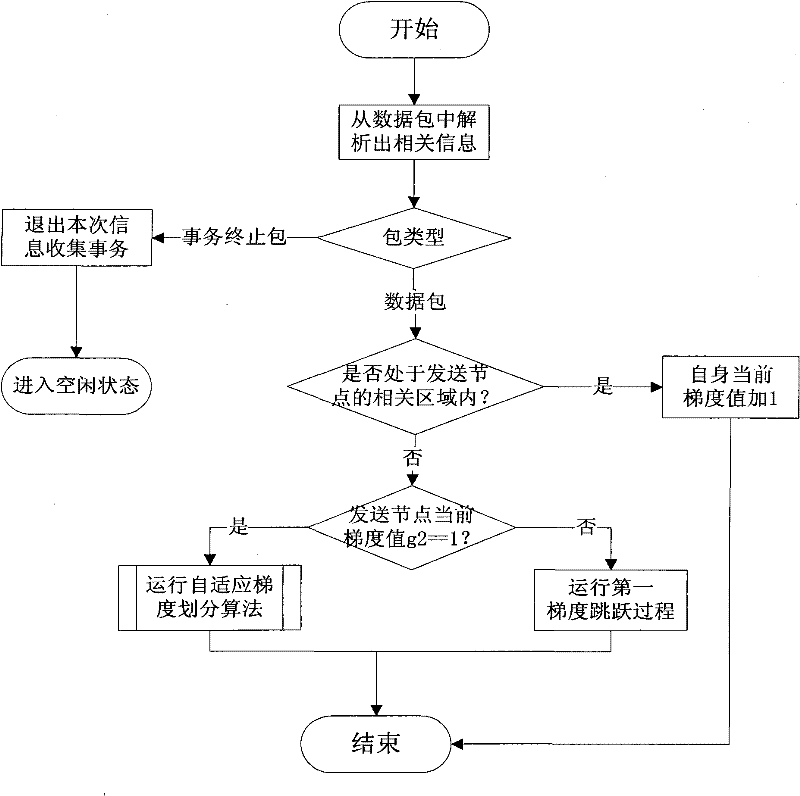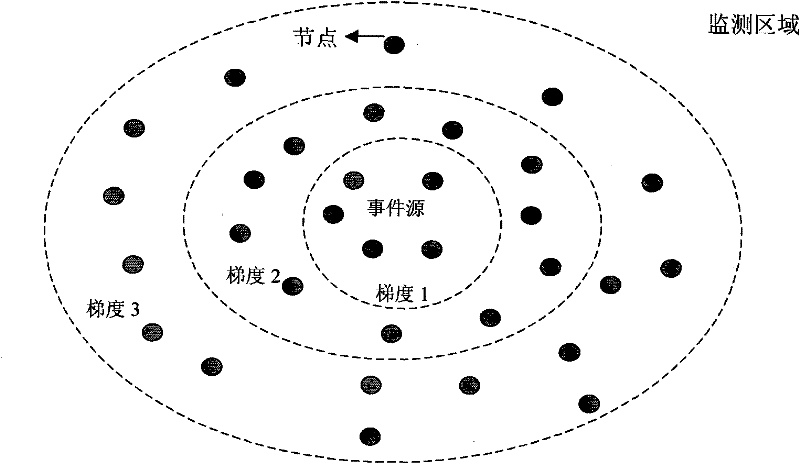A Media Access Control Method Based on Gradient Partitioning
A media access control and gradient technology, applied in wireless communication, network topology, electrical components, etc., can solve the problems of not supporting target tracking applications well, ignoring the spatial correlation of sensor nodes, and improving the performance of media access control methods. Achieve the effects of improving the competition mechanism, reducing competition pressure, and reducing energy consumption
- Summary
- Abstract
- Description
- Claims
- Application Information
AI Technical Summary
Problems solved by technology
Method used
Image
Examples
Embodiment Construction
[0039] The terms and formulas used in this section are explained as follows:
[0040] Correlation radius and correlation area: The correlation radius is calculated by the sink node according to the statistical information of the current sensor network, and sent to the sensor nodes in the wireless sensor network. The correlation radius calculation method is as follows: first, the converging node calculates the number n of sensor nodes in the gradient 1 according to information such as the size of the gradient 1 range and the distribution density of sensor nodes in the network. Select M (the number of sensor nodes required to report in the application, M<=n) among the n sensor nodes as the reporting node (the sensor node that sends data to the sink node in the wireless sensor network), and use these M sensors The signal strength information collected by the nodes and the application's requirements for reconstruction errors are used to calculate the node distance r, and r at this...
PUM
 Login to View More
Login to View More Abstract
Description
Claims
Application Information
 Login to View More
Login to View More - R&D
- Intellectual Property
- Life Sciences
- Materials
- Tech Scout
- Unparalleled Data Quality
- Higher Quality Content
- 60% Fewer Hallucinations
Browse by: Latest US Patents, China's latest patents, Technical Efficacy Thesaurus, Application Domain, Technology Topic, Popular Technical Reports.
© 2025 PatSnap. All rights reserved.Legal|Privacy policy|Modern Slavery Act Transparency Statement|Sitemap|About US| Contact US: help@patsnap.com



